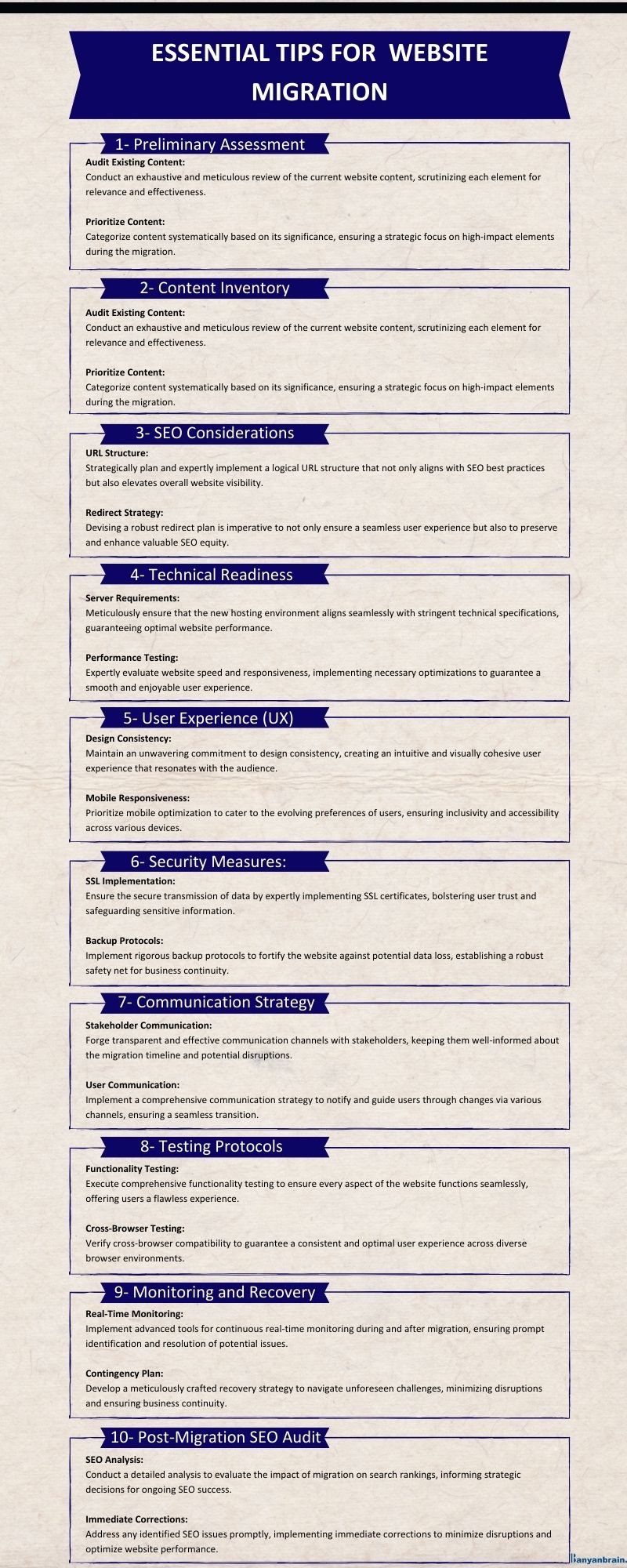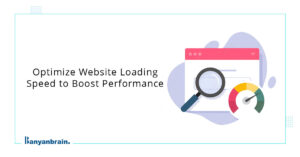Website migration transfers your initial website’s database, information, and files to a new hosting environment or platform. Businesses migrate their site as a means of unlocking new features, getting additional access to tools, improving their website performance or even for rebranding purposes. However, it is essential to ensure that the site migration follows the best practices, or else businesses may lose the current website ranking and performance. It may occur due to website downtime, broken backlinks, or poor SEO score, among the many reasons. Let us learn more about website migration and its best practices.
What do you mean by website migration?
Website migration is relocating any website from one hosting location or platform to another. In this, various aspects of a website, including the database, files, and paid plugins, to an entirely new hosting provider, server, domain or content management system (CMS). The website migration significantly changes the website structure, content, design and UX, which helps redefine the site.
Search engine optimization (SEO) is deeply impacted by migrating the website, and every business aims to retain the website authority during the website migration process. It can affect the website’s visibility on search engines. Therefore, the complete process of website migration is well planned and executed to ensure minimum loss of SEO efforts. Businesses can revamp their websites for many reasons. Let us know the causes of website migration.
Purpose of website migration
The intent of website migration can vary from business to business. Some of the reasons for website migration are as follows.
- Upgrading platform or CMS– Businesses may need to either switch to a different CMS or upgrade to a newer version of a CMS to improve website performance, gain more features, and access new tools. In such cases, migrating websites is a feasible option.
- Improving website performance– Loading speed is one of the characteristics of a good website. Site migration can help improve the loading speed, website performance and reliability of the site if done as planned. All these aspects of the website directly contribute towards SEO and improving the website ranking.
- Additional security– Businesses often migrate their websites to a more secure hosting environment to protect them against cyber threats and data loss due to any breach. This strengthens user privacy and builds brand trust.
- Enhancing SEO results– Companies work on designing SEO friendly website so that it becomes easier for audiences to discover the brand when looking up for similar queries. If there are persisting issues in the existing website, businesses may plan on migrating websites to optimize the website structure, fix existing errors and implement SEO best practices. It helps in improving search engine rankings.
- Domain change– Business identity may change with time and growing demands. In such cases, businesses may rebrand and need a new domain name for which they choose to migrate the website. It helps build a new brand identity and improve the website’s visibility.
What are the types of website migration?
- Changing website location– This includes moving or merging parts of the website, changing the domain name for rebranding, changing the mobile set-up, or converting from HTTP to HTTPS or HTTP2.
- Changing platforms– Inside the website infrastructure, a platform is a website authoring software such as WordPress or Dreamweaver. Businesses consider upgrading to a new platform version to introduce new features or move to a new platform entirely.
- Changing content– A website entails various web pages, and businesses can plan website migration by adding or removing web pages, consolidating multiple pages, hiding pages, or introducing new languages to the website content and pages.
- Structural changes– It is beneficial to change the structural hierarchy of the various web pages, change internal linking, and make navigation transformations to make the website easily navigable and user-friendly.
- Changing design and UX– To make changes to the website performance, businesses may change the website design and media changes to transform the user experience.
What can go wrong in a website migration?
Migrating a website is a complex and challenging process. If not done correctly, the website may end up losing all that it currently has without any significant improvements from the migration.
- Website downtime– During the migration process, cases of website downtime are likely, i.e., the website may not respond or function seamlessly to fulfil the user commands. The downtime can go up to several days if not adequately monitored and harm the UX and search engine rankings.
- Soft 404 error– While migrating a large quantity of old URLs, it is necessary to use 301 redirects instead of redirecting URLs to the homepage of the new site. Redirecting links to the new server before it is ready may lead to indexing issues by the search engine.
- Broken links– It is an essential part of technical SEO and while migrating a website, companies must work on 301 redirects to redirect the old URLs to new counterparts accurately. Failing to do this results in broken backlinks where the redirect is not working, and the webpage shows an error. It results in building user frustration.
- Loss in SEO rankings– Many on- page SEO mistakes can lead to loss of search rankings. If the URLs, content and images are not optimized and migrated correctly, it may impact the website performance, leading to a downfall in website ranking. It can also happen if the new hosting environment is not optimized according to the website’s needs and results in an increased website loading time.
- Mobile responses– While migrating a website, businesses must consider that a significant amount of website searches are performed by mobile phones, and therefore, the website must be mobile-friendly. If mobile responsiveness is overlooked, it can lead to a poor user experience and impact SEO rankings.
Best practices for website migration
- Set a migration objective– Businesses must collaborate with digital marketing agencies to contact SEO specialists who can help explain the purpose and intent of migrating websites. The reason for website migration may vary from platform upgrades, domain changes, rebranding, or structure redesigning.
- Assembling a team– Based on the migration objectives, create a timeline for website migration and ensure that the process takes place during low-traffic periods, i.e., during the night. Set a realistic budget and assign responsibilities to the team in charge of migration.
- Create a backup of your website– It is essential to backup all databases, files, and configuration settings before moving ahead with migration and making changes to the website. In case of any errors, you always have your initial data to return.
- Audit the website– An SEO audit analyses all the webpages and their aspects, such as content, images, website loading speed, URLs, functionality or anything that needs improvement. This way, you will know the migration progress made to the website.
- Planning site migration– After the audit, you will encounter backlinks and SEO that you may want to preserve. Changes in the website must be planned accordingly so that they maintain the current site performance.
- 301 redirect map– Announcing your new site to the users before migrating is essential. It is vital to promote a new site on search engine to let the audiences and the search engine know about it. Once this is done, create a redirect map for the most valuable pages. Avoid redirecting to the home page, as it can lead to 404 errors on the website.
- Testing the redirects– Websites can be tested for 301 redirects in a staging environment that can help audit the new site. However, it is necessary to block the testing site, or the contents uploaded for testing may be crawled and indexed by the search engine.
- Track the site migration– While testing the new website, monitor the performance and traffic level changes through Google Analytics to check for anomalies. It can be used as a benchmark to judge a site’s performance once migration gets implemented.
These are a few best practices in website migration that businesses and marketing teams must confer to successfully migrate the website without many challenges and improve the website performance.
Banyanbrain is a stellar performer among the various digital marketing agencies in India. Our experienced and well-trained team can offer result-oriented digital marketing services, including SEO, SMO, PPC, and content marketing, to clients across the globe.







